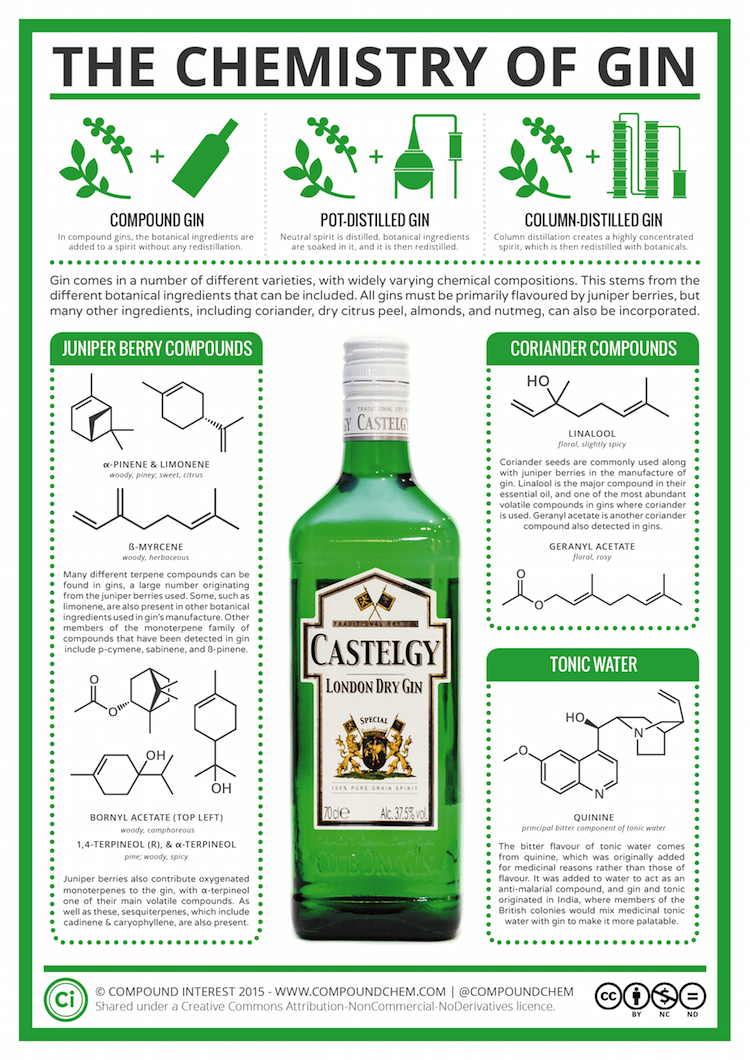The Science Behind the Different Methods of Crafting a Good Gin (and Tonic)
In the fifth graphic of their “Alcohol Chemistry” series, Compound Chemistry explores the science behind the different methods of crafting the wonderful and essential spirit of gin and its natural companion, tonic.
Before compounds from the botanical ingredients are extracted into the gin, the spirit is essentially flavourless. The flavour that’s imparted depends on the exact ingredients added, the specifics of which, for most gin makers, are a closely guarded secret. However, in the EU at least, the dominant flavour must be that of juniper berries. These contribute a wide range of terpene compounds to the gin: alpha-pinene, beta-myrcene, limonene, gamma-terpinene, p-cymene, sabinene, and beta-pinene. Some of these are also contributed by other additions; for example, limonene is extracted from dried citrus fruit peels that may also be added during the redistillation process. Generally, they tend to confer woody and herbaceous tones to the flavour of the gin. Oxygenated terpenes also play a part, and these too come from juniper berries.







